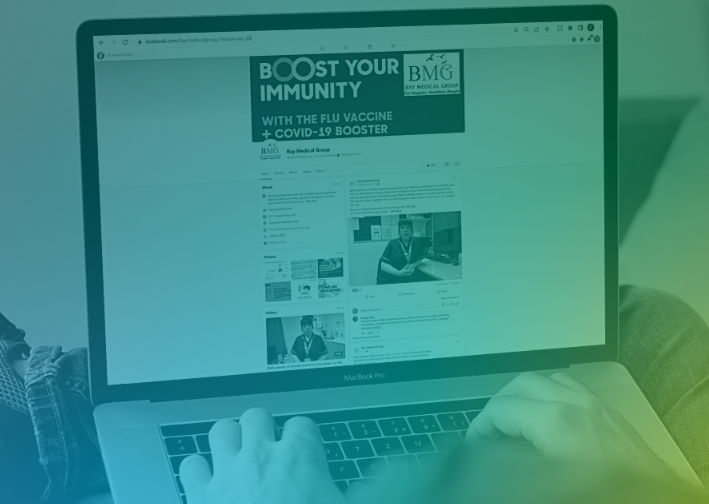Social media is becoming the most popular tool for GP practices to use for broadcasting messages to patients. Thousands of practices across the UK have now been set-up on platforms like Facebook, Instagram, Twitter, Tik Tok, Snapchat, and even LinkedIn! This is allowing them to communicate better with their patients and has created a new social media ecosystem for both practices and patients to benefit from. There are numerous platforms to choose from, each with their own opportunities and unique style of communication.
A good practice patient communication strategy incorporates many elements, such as websites, newsletters, SMS texts, and posters in waiting rooms, but only recently have we seen so many practices turn to social media to get their messages out. Interestingly, most people aged 65 and over now use Facebook regularly to access information and engage with online communities, and this offers practices a great opportunity!
About 84% of people in the UK actively use social media. About 66% of people actively use Facebook, making it the most popular social media platform in the UK. However, less than 3% of people aged 13-17 use Facebook. Younger demographics of people use platforms like Instagram, Tik Tok, and Snapchat more often. For practices to communicate with different groups of their patient populations, they need to venture out beyond Facebook. Other platforms also allow practices to share different types of content.

For us, Facebook is the best starting point, and one that all practices should now aim to utilise. This is because older people are more vulnerable to health issues than younger people and so rely more on General Practice for their services and information. This makes older people the main target group on social media, and therefore Facebook makes the most sense for practices to start with. People also more often comment on posts on Facebook over other platforms, and so this also allows practices to engage more and develop a rapport. Once the benefits of being on Facebook have been realised, we advise practices that Instagram and Twitter are the next best platforms to explore, as they are providing practices with much more visibility online than Facebook alone and cover the majority of patient groups.
What we encourage practices to do is to re-frame their perceptions of social media and see the real value in their patients seeing and engaging with the information they share online. Looking at some of the analytical data that we have on our Social Media Managed Service, where we manage over 400 practice social media pages from across the UK, we continue to see high levels of reaches, engagements, and followers across all platforms.
For example, we supported Bay Medical Group in Morecambe to get on Facebook just over 3 years ago and in the month of October 2022 they reached over 90,000 patients on Facebook alone! They are now also on Instagram and Twitter, where they regularly reach an additional 50,000 people per month with their posts. For Bay Medical Group, and countless other practices and Primary Care Networks, social media has now become invaluable.
Overall, having a presence on social media can be a great way for doctors’ surgeries to reach out to and engage with their patients, to promote their services and to help patients stay healthy.


Blog by Cameron Booth
Cameron has a strong entrepreneurial background and is passionate about creating value for health and social care through developing new tools and models of care that use the very best of digital health technology. For example, Cameron has helped to create the Digital Journey Planner – which is now being deployed across the UK in General Practice, in partnership with NHS England and Improvement.
Cameron likes to work with our partners to help them get the most out of our programmes, and works with the creative team to develop new marketing materials like documents, case studies, and even podcasts.
Cameron helps to manage our social media managed service, which supports health and social care organisations, including GP practices, to develop and utilise social media as an effective patient communications tool. This service includes anything from managing page content and comments, to running webinars and reporting on insights.
Make an enquiry


